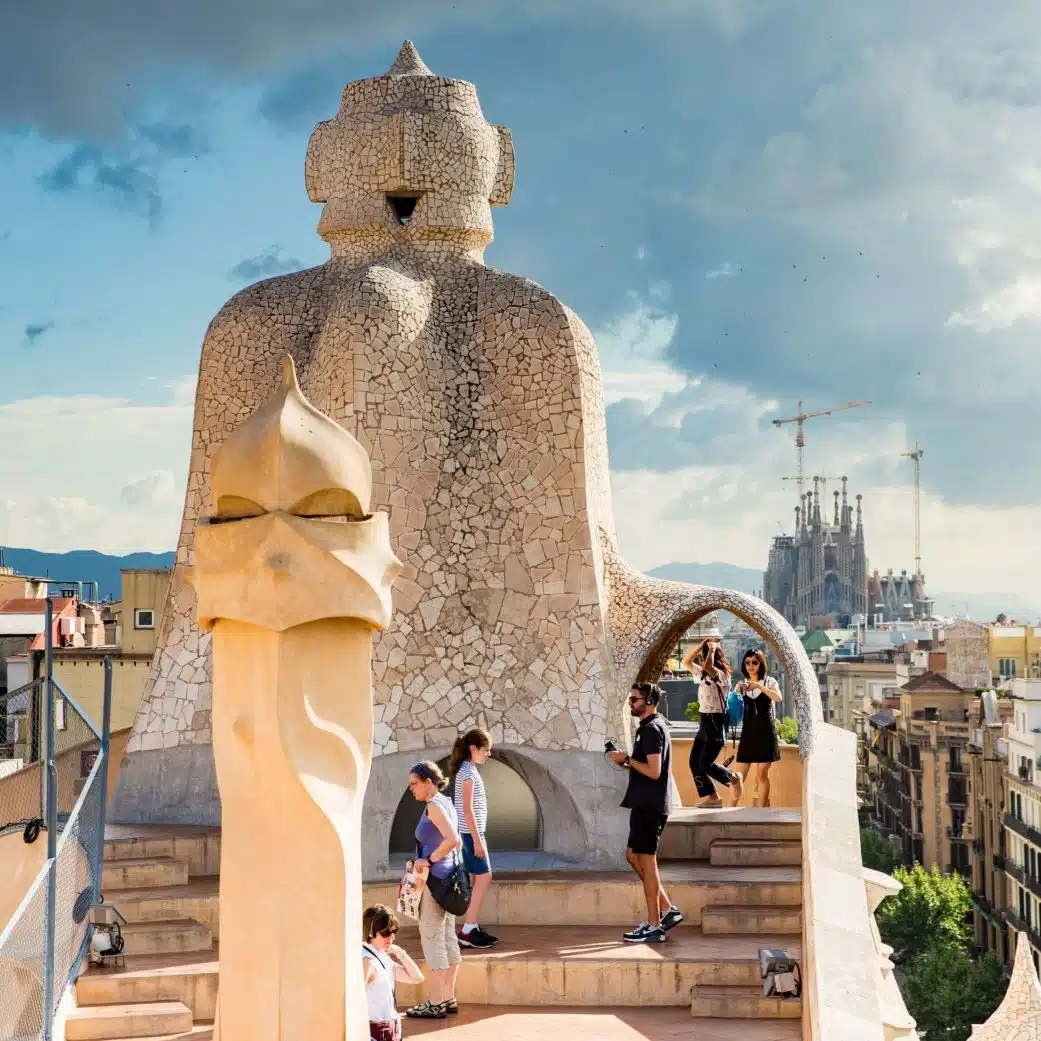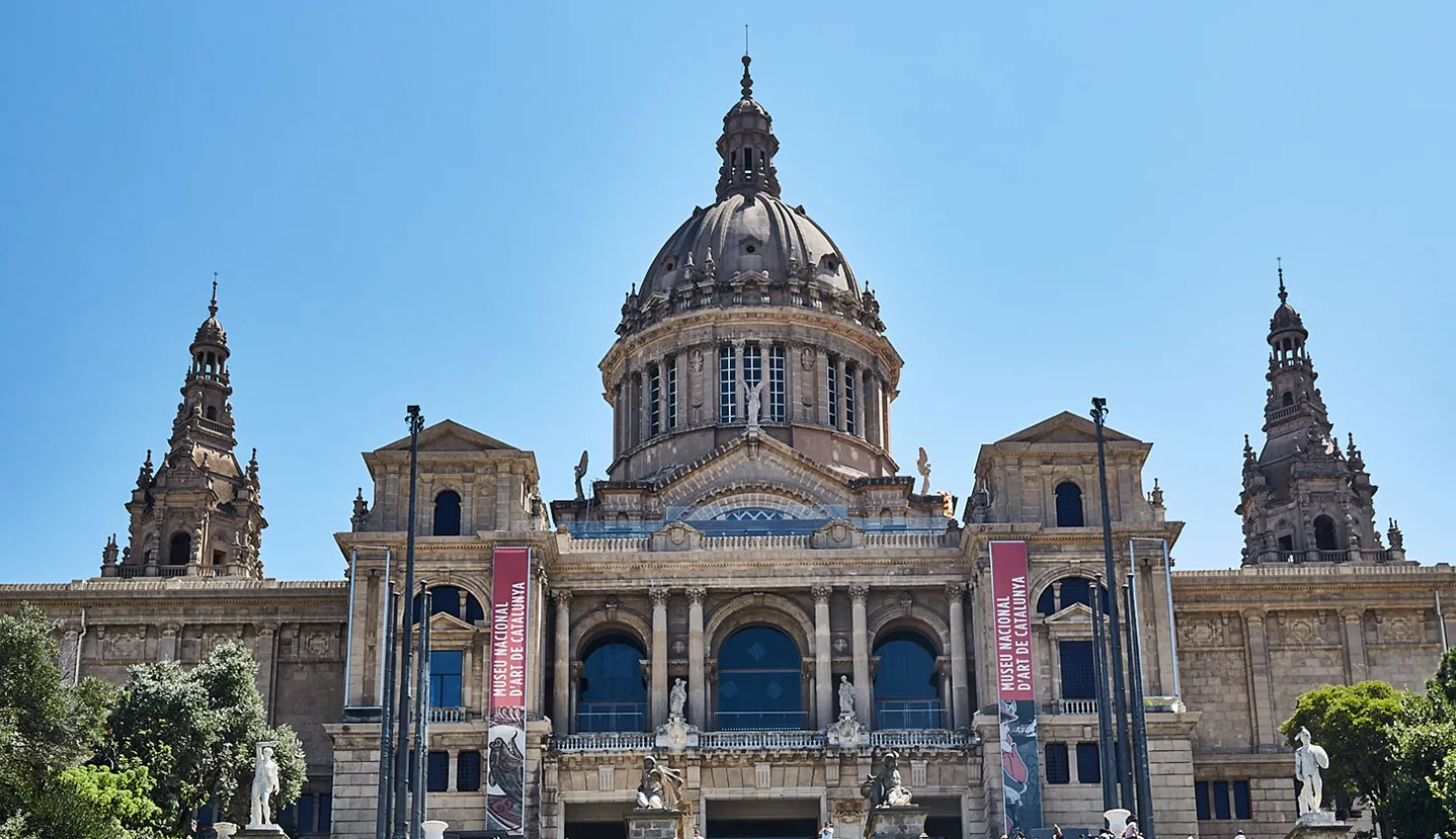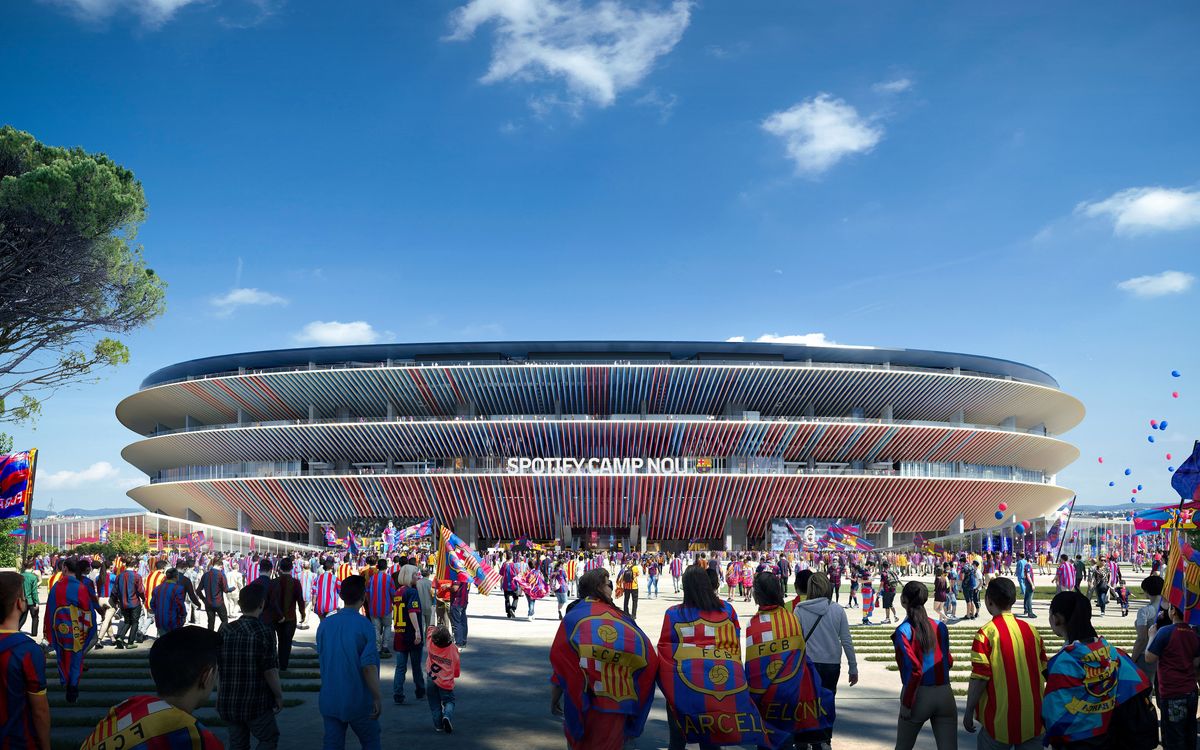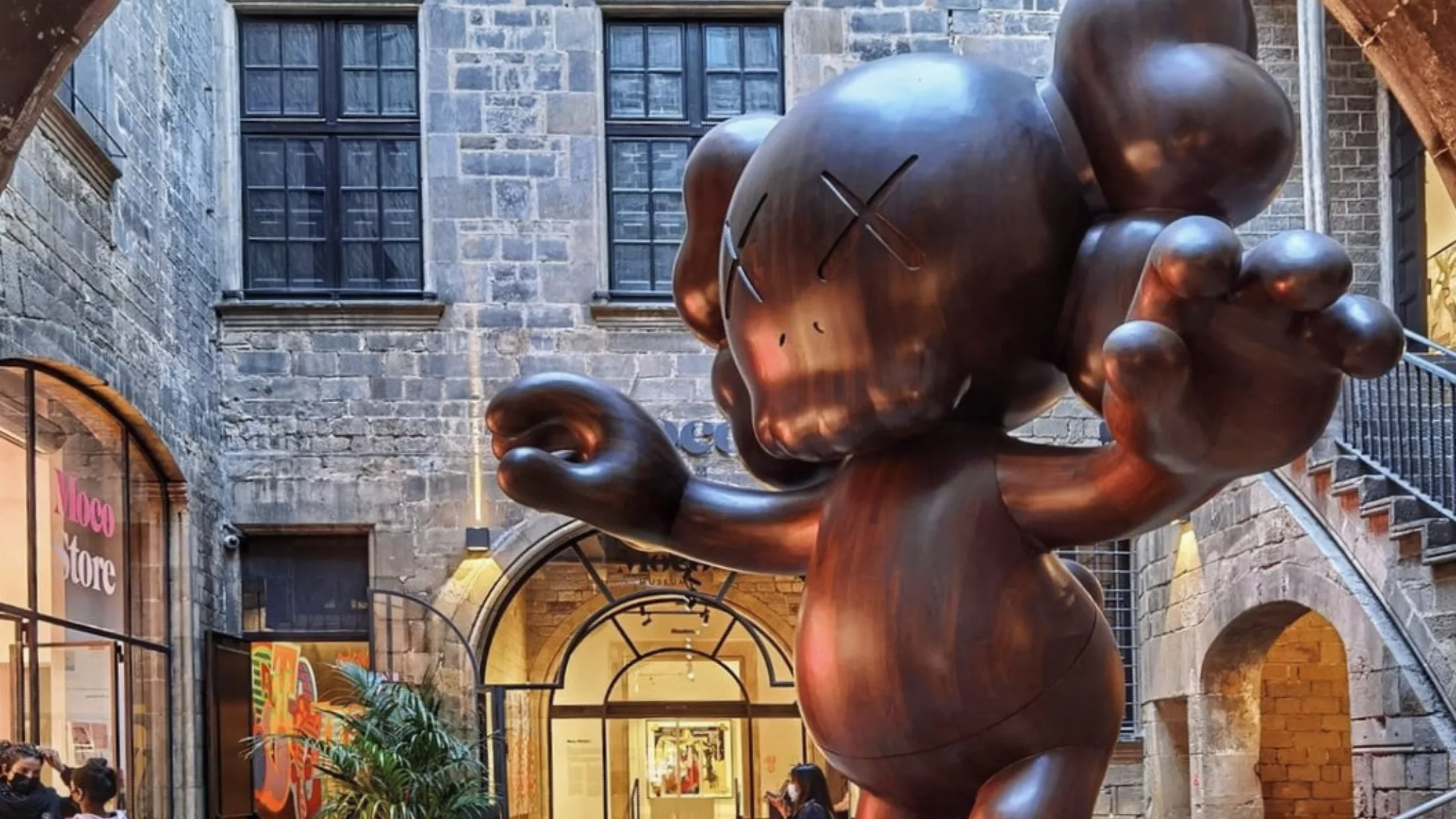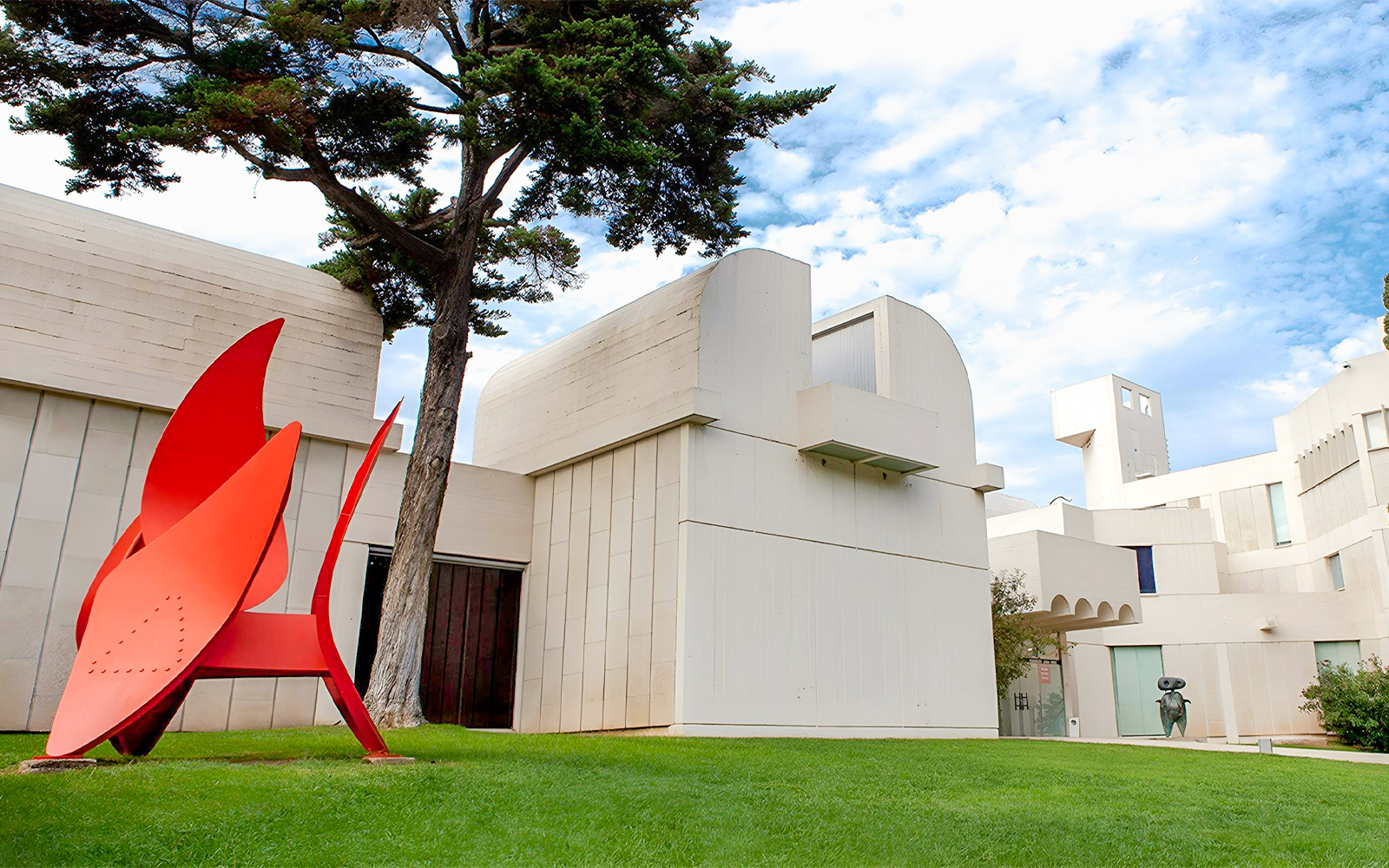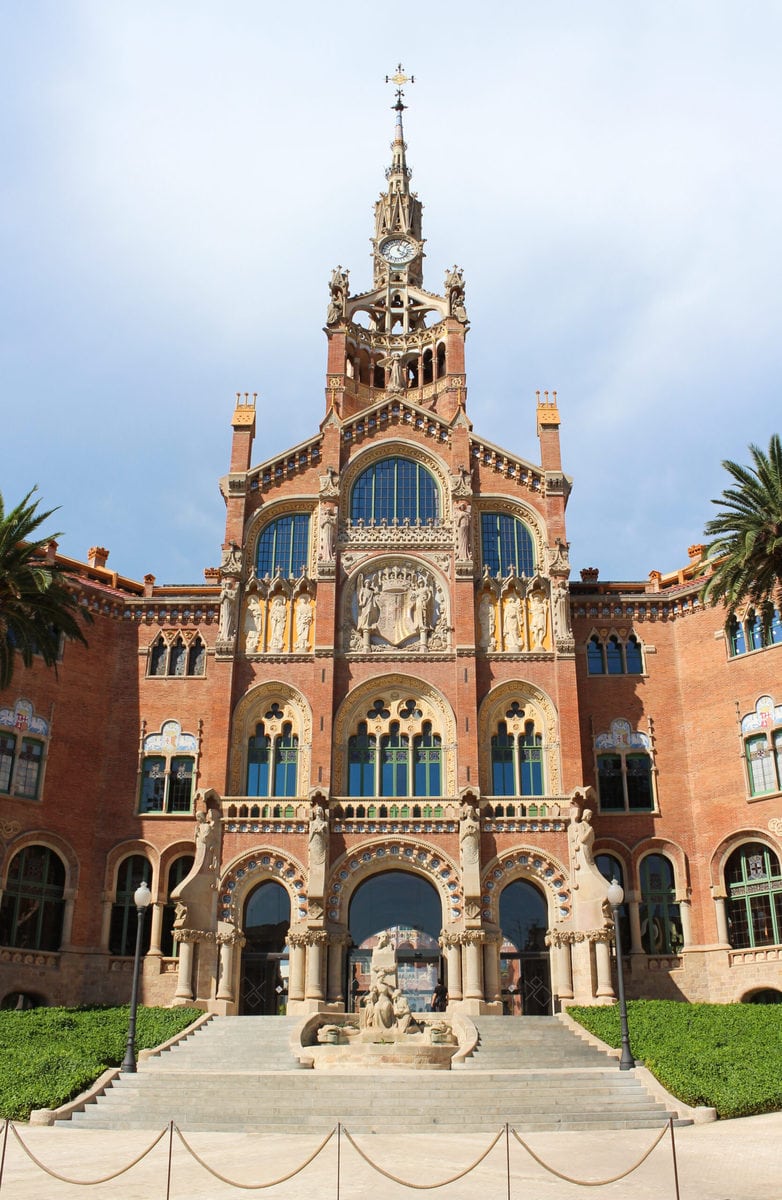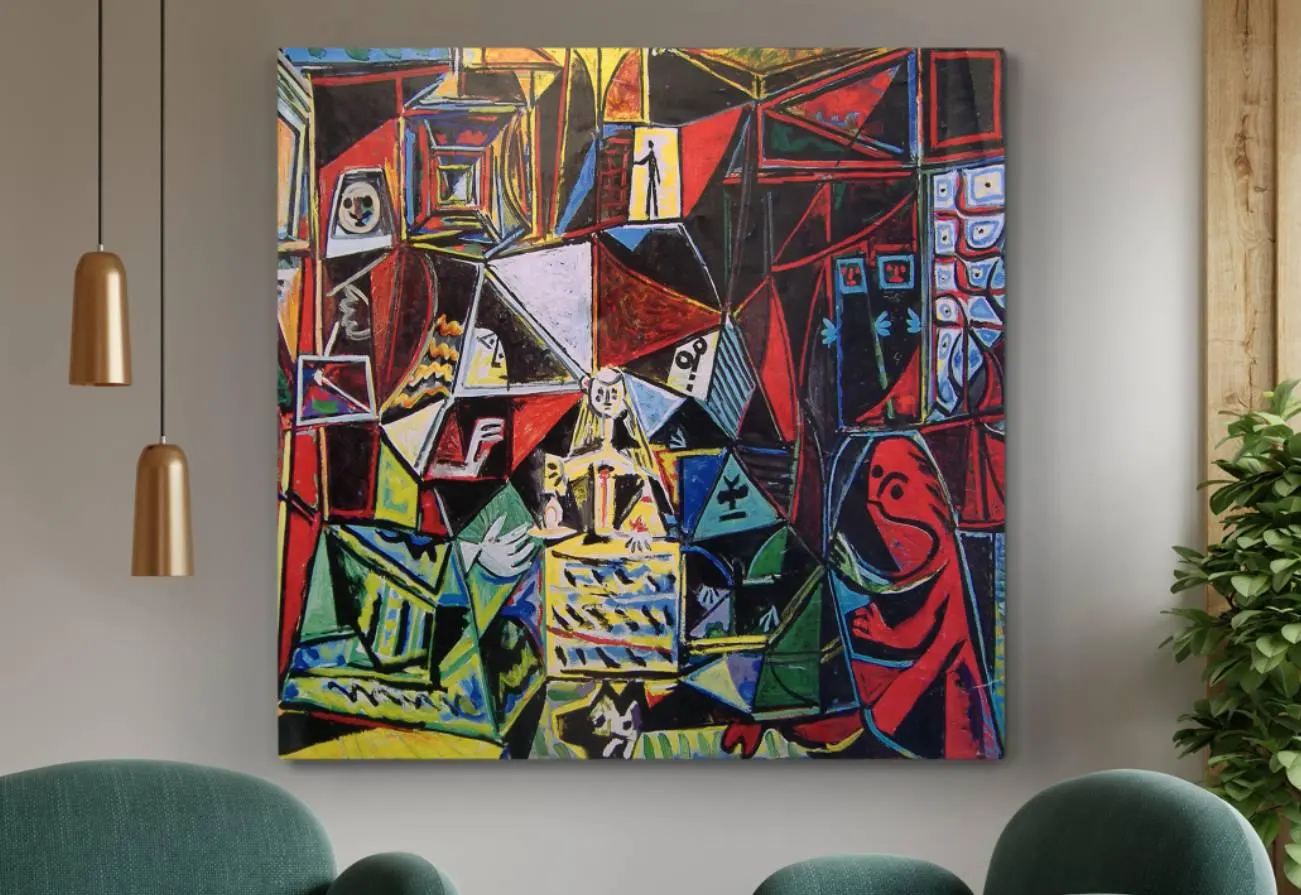What is There to See?
Casa Milà is an immersive experience, inside and out. While the exterior alone is impressive, the interior reveals Gaudí’s complete vision of how people should live in harmony with nature, form, and function.
- The Façade: The building looks like a rolling sea of stone, with wave-like balconies of wrought iron and natural, asymmetrical shapes. It’s often compared to a living organism — and that was exactly Gaudí’s intention.
- The Rooftop: Arguably the most famous part of La Pedrera, the rooftop is a surreal sculpture garden of chimneys and vents designed as helmeted sentinels. You’ll enjoy 360º views of Barcelona and a unique, dreamlike setting.
- The Attic – Espai Gaudí: Beneath the rooftop, the attic space showcases Gaudí’s architectural models, sketches, and multimedia explanations of his natural inspirations — from animals to plants and seashells. The catenary arches make the entire room feel like the ribcage of a massive beast.
- The Apartment: Step back in time to early 20th-century bourgeois Barcelona. This fully furnished flat features original decor, kitchenware, and family rooms — giving insight into how the building’s first residents lived.
- The Courtyards: Gaudí broke tradition by designing two central courtyards that bring natural light and ventilation to all levels. These spaces are decorated with colorful murals, curving walls, and open galleries — a refreshing break from dark city living.
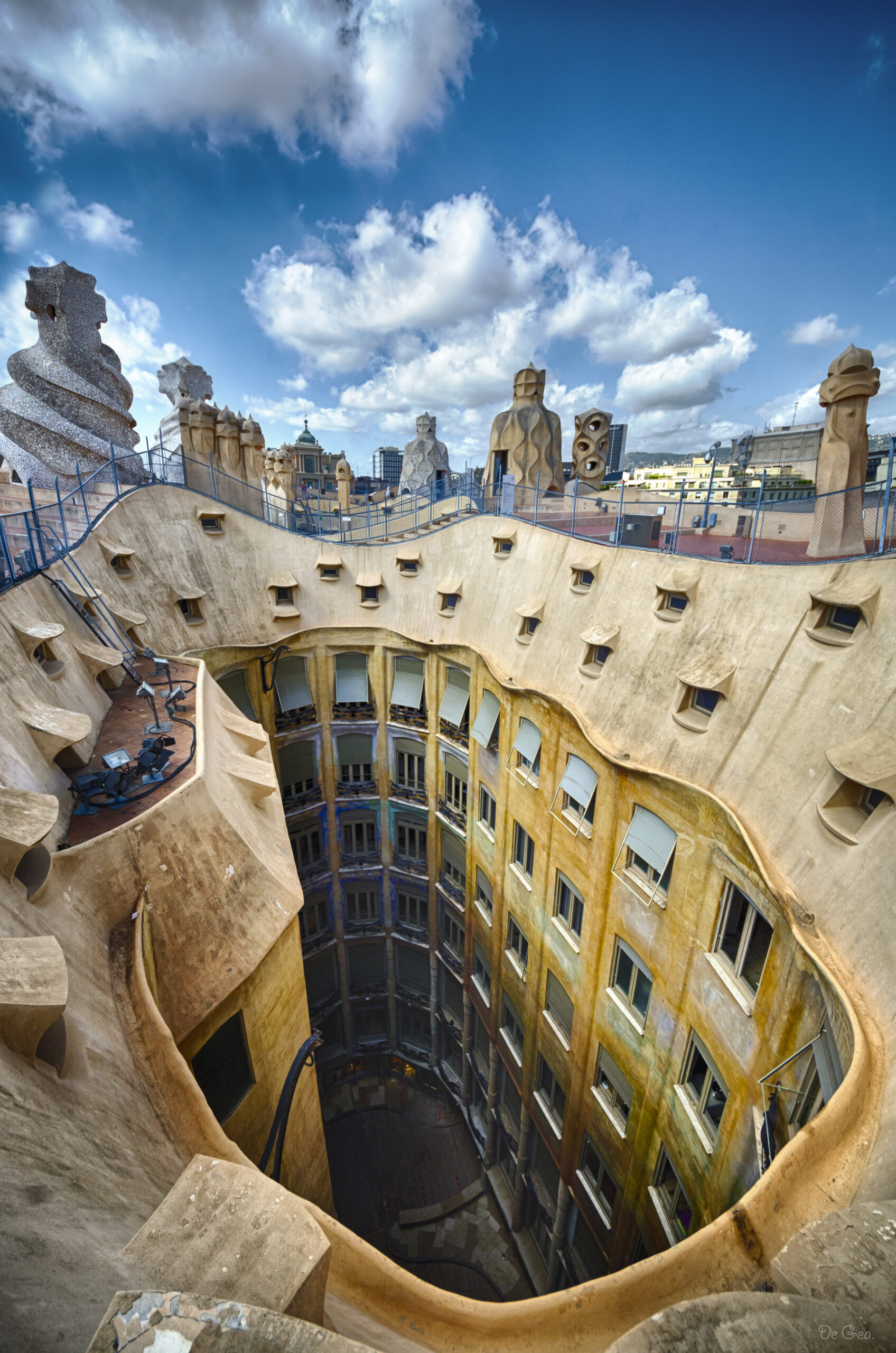
About Antoni Gaudí
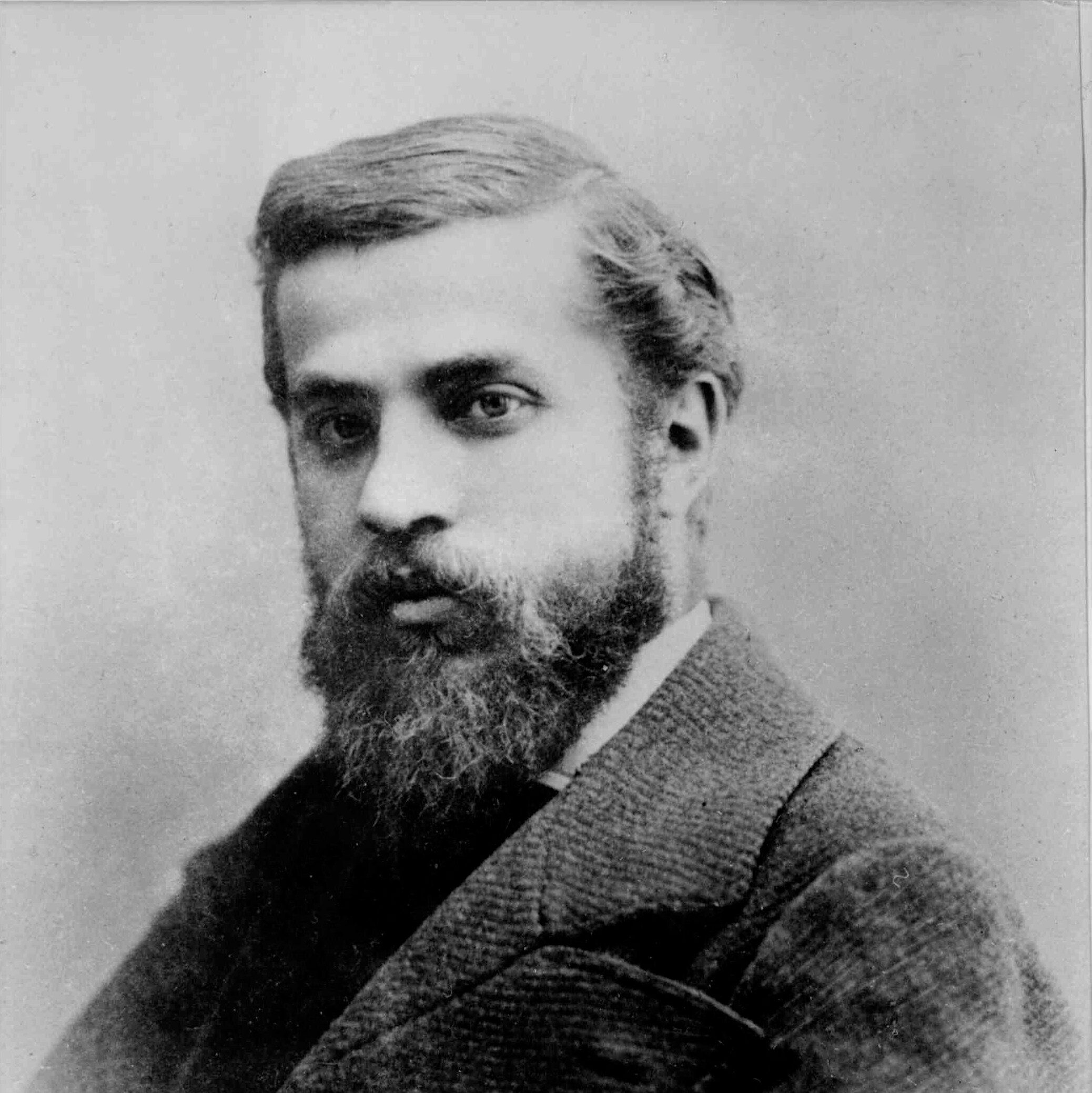
Antoni Gaudí (1852–1926) was a visionary Catalan architect best known for blending organic forms, spirituality, and innovative engineering. While often associated with the Sagrada Família, Gaudí’s genius extends to private homes, public parks, and religious buildings throughout Catalonia.
Influenced by nature, Gothic art, and religion, Gaudí developed his own architectural language full of curves, textures, color, and symbolism.
Casa Milà represents one of his last civil works before dedicating himself entirely to the Sagrada Família. It stands as a clear statement of Gaudí’s refusal to follow convention — and a celebration of freedom in design.
A Short History of Casa Milà
Commissioned by wealthy couple Pere Milà and Roser Segimon, Casa Milà was constructed between 1906 and 1912 as a luxury apartment block. At the time, Gaudí was at the peak of his fame and freedom — and this building reflects that ambition.
The design was controversial. Locals mocked it as “La Pedrera” (the quarry), and the city even halted parts of construction due to zoning issues. But Gaudí stood firm, and the final result was a total departure from anything Barcelona had seen.
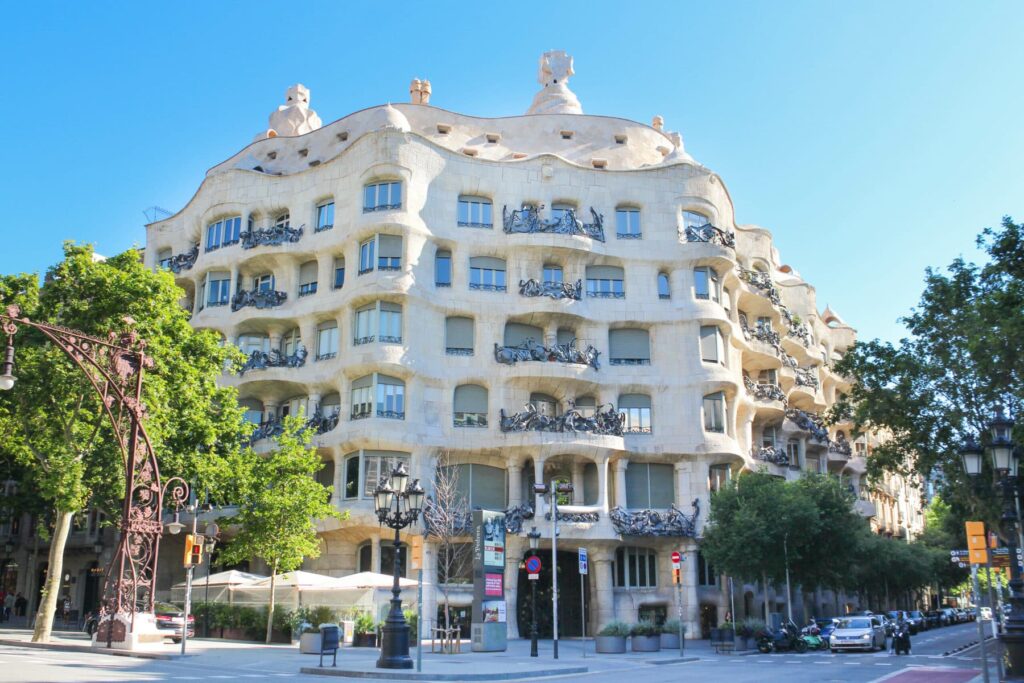
After years of use and minor modifications, the building was restored and opened to the public in 1987, with continued restoration of its interiors and rooftop sculptures.
In 1984, Casa Milà was declared a UNESCO World Heritage Site, alongside other works by Gaudí.

